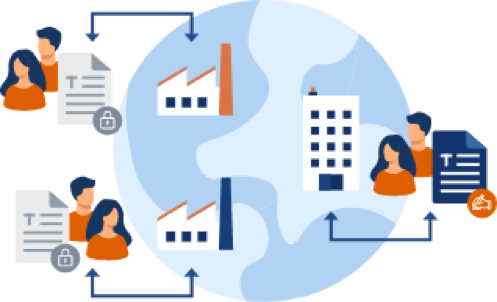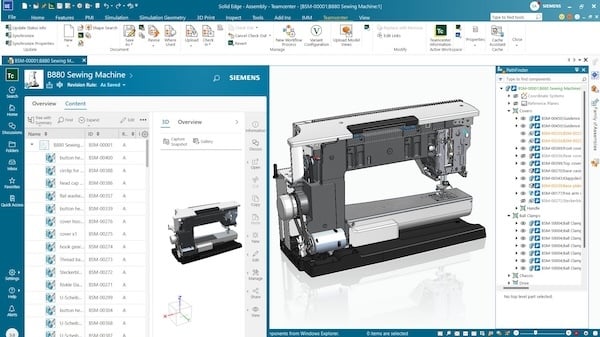File sharing and collaboration for CAD designers and engineers in the global era has become increasingly important with the advancements in technology and the need for seamless communication and teamwork across different geographical locations. Traditionally, CAD designers and engineers would work in a localized environment, sharing files and collaborating within the same office or organization. However, with the globalization of businesses and the rise of remote work, it has become necessary to have efficient file sharing and collaboration tools that enable seamless communication and teamwork across different locations.
This article will explore the global nature of talent acquisition for CAD designers and engineers as companies expand beyond their original local market for customers and resources, as well as how modern distributed file systems can improve file sharing, version control, and collaboration for remote project teams. Additionally, a comparison and contrast of other CAD file sharing solutions, including cloud-based platforms, will be discussed, highlighting the advantages of using a distributed file system for enhanced work productivity.
Global Talent = Global Workforce
CAD design and engineering talent is in high demand across various industries and regions globally. Companies are no longer limited to hiring professionals from their local talent pool but can access a global talent pool to find the right expertise for their projects. The internet has made it easier to identify, attract, and hire talent from anywhere in the world. Many companies now use online platforms, such as job portals, professional networking sites, and freelance websites, to connect with professionals from different countries and cultures. This global talent acquisition approach allows companies to tap into a diverse pool of design and engineering talent with varied skill sets and experience levels, leading to improved innovation and problem-solving.
Furthermore, advancements in remote work technologies have made it easier for companies to hire talent from different parts of the world and form remote project teams. Remote work tools, such as video conferencing, project management software, and collaborative messaging platforms, have bridged the geographical gap, enabling teams to work seamlessly despite being geographically dispersed. This has led to the emergence of remote teams that are highly efficient and productive, leveraging the skills and expertise of designers and engineers from different countries and time zones. Remote teams can also work on projects around the clock, taking advantage of the time zone differences, resulting in faster project completion and improved time-to-market.

Multi-site file locking prevents drawings from being accidentally overwritten by remote users. Image source: Peer Software.
However, effective collaboration among remote design and engineering teams requires efficient file sharing and version control. Design and engineering projects involve complex CAD files, which are often large and require frequent updates. Traditional file sharing methods, such as email attachments, as well as cloud-based file sharing applications like Google Drive and Dropbox can be slow, cumbersome, and prone to version control issues. This is where modern distributed file systems come into play as it provides maximum efficiency by keeping files close to end-users while also alleviating security concerns by enabling company IT administrators with full control of where data is stored and who has access to them.
File Management Solution
A distributed file system is an enterprise file management solution that is designed to provide efficient file sharing, version control, and collaboration for remote project teams. In a distributed file system, files are stored across multiple servers or nodes that are geographically distributed and close to remote and distributed project teams. Each team member can access a local copy of the files, regardless of their location, resulting in faster file access and reduced latency. When changes are being made to a file by one end-user, other users are prevented from making an edit at the same time to prevent version conflicts. Committed file changes are then synchronized across all the nodes in real-time, ensuring that all team members have the latest version of the file. This eliminates version control issues, as the distributed file system becomes the single source of truth for all project files, and all changes are tracked and recorded.
Compared to other CAD file sharing solutions, such as cloud-based platforms, distributed file systems offer several advantages for remote engineering teams. Cloud-based platforms like Google Drive store files on remote servers, which can result in increased latency and slow file access, especially for large CAD files. And, though some cloud-based platforms like Dropbox also allow for file sharing through synchronization capabilities, these often lack effective version conflict prevention methodologies.
CAD software manufacturers like Autodesk and Solidworks have also endeavored to help solve the workflow and file sharing challenges of globally distributed teams through add-on product data management solutions that work in conjunction with their main CAD software offerings. However, the drawback to these historically has been a lack of support for files created by other applications as well as a high cost and high level of effort in deployment.
For most organizations, a modern distributed file system that can seamlessly integrate with existing storage systems and with cloud storage as needed provides for the most flexible, cost effective, and efficient solution to meet the challenges of today’s globally distributed teams.

Searching for more information about Product Design & Manufacturing?
Click here!
Jimmy Tam
Jimmy Tam is the CEO of Peer Software, a global software company focused on simplifying file management and orchestration for enterprise organizations since 1993. Jimmy is a 25-year veteran of enterprise software solutions and works with customers and partners daily on architecture, planning and design of IT infrastructure solutions that meet the complex demands of data storage, access, protection, and sharing across distributed employees, partner firms, and customers.
View All Articles




Share This Post